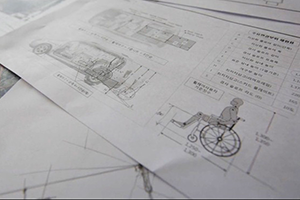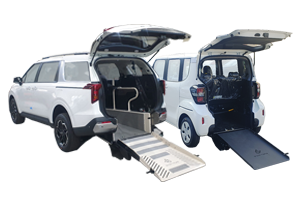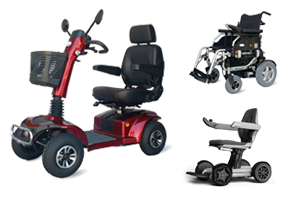11 Creative Ways To Write About Programing Key
페이지 정보

본문
What Are the Different Types of Codes and how to program a car key Do They Work?
Modern car keys come with unique chips that are unique to each vehicle, unlike older keys. This prevents thieves from using the key to start the car.
These keys are typically purchased from a dealership or copied by a locksmith. The process for programing the key differs by manufacturer and involves turning the key to the off position, without triggering the engine, and then taking it off it within a predetermined time frame.
Transponder Codes
As its name suggests, transponders send out an encoded signal containing an eight-digit number code whenever it is being questioned by air traffic control. The signal is referred to as an SQUAWK code and it is the basis for aircraft identification on radar screens. It is also used to transmit a specific message to the air traffic control system in an emergency situation or to notify controllers of changing weather conditions. Squawk codes can be used to communicate with ATC when the pilot is unable to speak to the radio. They are vital for safe flying.
Every aircraft has a transponder which responds to radar probes by displaying an identifier. This enables ATC to identify the aircraft in a busy radar screen. Transponders can be configured to respond in different ways when questioned. Mode A only transmits the code, while mode C also contains altitude information. Mode S transponders provide more detailed information such as callsigns and positions. This can be useful when flying in crowded airspace.
A common sight is a small brown box that is located under the pilot's seat in most aircraft. The transponder is a small beige-colored box that is used to transmit the SQUAWK code when air traffic control activates the aircraft. The transponder can be set to the 'ON, and 'ALT' or SBY (standby position) positions.
Air traffic control will typically instruct a pilot to "squawk the ident". This is an order for pilots to press their transponder IDENT button. The ident button makes the aircraft blink on ATC radar screens which allows them to identify your aircraft on the screen.
There are 63 discrete code blocks that can be assigned to an aircraft. However, there are also reserved codes that prevent the use cost of programming a car key certain codes in areas of high traffic or in times of emergency. The discrete code blocks are set up using statistical analysis to limit the possibility that two aircraft with the same SQUAWK codes will be in the same sector at the same time.
A transponder key contains an individual chip that holds the ID code. When the security light of a car appears, it indicates that the ID code in the key isn't matching the one in the car's computer. The immobilizer of the car will be turned off, and the car won't start unless a different key is used. To avoid this, Pop-A-Lock recommends that customers purchase only new transponder keys or have a professional locksmith like ours cut them for them.
PIN Codes
 A PIN code consists of a set of numbers (usually 4 or 6 digits) that are used to gain access to a device, service, or system. A smart phone, for instance, comes with PIN numbers that users must enter each time they use the device. PIN codes are also used to safeguard ATM or transactions at POS, [1 secure access control (doors computers, doors, cars),[2] computer systems,[3and internet transactions.
A PIN code consists of a set of numbers (usually 4 or 6 digits) that are used to gain access to a device, service, or system. A smart phone, for instance, comes with PIN numbers that users must enter each time they use the device. PIN codes are also used to safeguard ATM or transactions at POS, [1 secure access control (doors computers, doors, cars),[2] computer systems,[3and internet transactions.
Even though a longer PIN may appear to be more secure than a shorter one, it is possible to hack or guess even the four-digit PIN. To provide greater security, it is recommended that PINs be at least 6 digits in length, and include both letters and numbers. PIN codes are also often required by some OEMs to allow aftermarket automotive key programmer programmers to prevent them from being used by non-authorized people to collect data from the modules.
VIN Numbers
VIN numbers are used to identify vehicles and provide the most extensive information about them. VIN numbers are unique to every vehicle on the planet and are not applicable to alien vehicles (or whatever). The 17 numbers of a VIN code are a combination letters and numbers which can be decoded to reveal vital information about your car or truck.
Modern cars are digital libraries that offer many details about their history and specifications. A VIN number is the key to access this information, allowing you to discover everything from whether your car has been subject to recalls to the number of times it's been owned by different owners.
Each section of a VIN number contains a different piece of information. The first digit is, for instance, what kind of car it is, such as a pickup truck, or SUV. The second digit indicates the manufacturer. The third digit indicates the division of assembly for the car. The fourth through eighth digits represent the model type, restraint system type and body type, along with the codes for transmission and engine. The ninth digit is the check digit which helps prevent fraud by verifying that the VIN number hasn't been altered.
In North America, the 10th through 17th digits of the VIN code are referred to as the Vehicle Identification Section, or VIS. The tenth and 11th digits indicate the year of manufacture. The eleventh digit indicates which assembly plant produced the vehicle. The tenth to seventeenth digits can also include additional information such as features or options that are installed in the mobile car key programming.
The VIN code is a serial code with six digits, which uniquely identify a car or truck. The final digit is also the check number and the remaining digits are transliterated to numbers. For example, the first digit gets an eight value; the next digits increase by one until it reaches nine at the seventh digit. Then, it becomes two. Then the whole VIN will be translated back to its original form, by multiplying each weight by 11. If the result is equivalent to the check digit, then the VIN is valid.
Data Transfer
Data transfer is the act of transfer of data from one location to another. The information can be transferred in a variety of ways including digital signals to traditional paper documents. Data transfers may also take place between different computer programs, which are often called software packages. A data transfer that is efficient requires careful planning and consideration of the limitations of each program. It could be necessary to reformat the data.
A key programmer tool typically allows a technician, or an average person to program a brand new transponder for their vehicle. This is a fairly simple procedure that involves connecting the tool to the OBD II port on the vehicle, and utilizing it to pull programming information from the computer. The tool then recodes your transponder so that it matches the code stored in the software. This allows you to use the key to start your vehicle.
During the transfer of data all errors will be stored into an error stack. This stack can be retrieved for troubleshooting later. You can set up the data transfer to restart loading processes automatically when they fail a specified number of time. This error storage is helpful if you need to monitor an application that is targeted, and can help you avoid losing data records which may not be reloaded successfully.
A data transfer process can transfer data between persistent objects in SAP BW for example, a DataSource or the Persistent Staging Area (PSA). It can also perform delta transfer which only transfers the latest data to the destination. This can be helpful for archiving, or for sharing data between systems that aren't linked otherwise.
Modern car keys come with unique chips that are unique to each vehicle, unlike older keys. This prevents thieves from using the key to start the car.
These keys are typically purchased from a dealership or copied by a locksmith. The process for programing the key differs by manufacturer and involves turning the key to the off position, without triggering the engine, and then taking it off it within a predetermined time frame.
Transponder Codes
As its name suggests, transponders send out an encoded signal containing an eight-digit number code whenever it is being questioned by air traffic control. The signal is referred to as an SQUAWK code and it is the basis for aircraft identification on radar screens. It is also used to transmit a specific message to the air traffic control system in an emergency situation or to notify controllers of changing weather conditions. Squawk codes can be used to communicate with ATC when the pilot is unable to speak to the radio. They are vital for safe flying.
Every aircraft has a transponder which responds to radar probes by displaying an identifier. This enables ATC to identify the aircraft in a busy radar screen. Transponders can be configured to respond in different ways when questioned. Mode A only transmits the code, while mode C also contains altitude information. Mode S transponders provide more detailed information such as callsigns and positions. This can be useful when flying in crowded airspace.
A common sight is a small brown box that is located under the pilot's seat in most aircraft. The transponder is a small beige-colored box that is used to transmit the SQUAWK code when air traffic control activates the aircraft. The transponder can be set to the 'ON, and 'ALT' or SBY (standby position) positions.
Air traffic control will typically instruct a pilot to "squawk the ident". This is an order for pilots to press their transponder IDENT button. The ident button makes the aircraft blink on ATC radar screens which allows them to identify your aircraft on the screen.
There are 63 discrete code blocks that can be assigned to an aircraft. However, there are also reserved codes that prevent the use cost of programming a car key certain codes in areas of high traffic or in times of emergency. The discrete code blocks are set up using statistical analysis to limit the possibility that two aircraft with the same SQUAWK codes will be in the same sector at the same time.
A transponder key contains an individual chip that holds the ID code. When the security light of a car appears, it indicates that the ID code in the key isn't matching the one in the car's computer. The immobilizer of the car will be turned off, and the car won't start unless a different key is used. To avoid this, Pop-A-Lock recommends that customers purchase only new transponder keys or have a professional locksmith like ours cut them for them.
PIN Codes
 A PIN code consists of a set of numbers (usually 4 or 6 digits) that are used to gain access to a device, service, or system. A smart phone, for instance, comes with PIN numbers that users must enter each time they use the device. PIN codes are also used to safeguard ATM or transactions at POS, [1 secure access control (doors computers, doors, cars),[2] computer systems,[3and internet transactions.
A PIN code consists of a set of numbers (usually 4 or 6 digits) that are used to gain access to a device, service, or system. A smart phone, for instance, comes with PIN numbers that users must enter each time they use the device. PIN codes are also used to safeguard ATM or transactions at POS, [1 secure access control (doors computers, doors, cars),[2] computer systems,[3and internet transactions.Even though a longer PIN may appear to be more secure than a shorter one, it is possible to hack or guess even the four-digit PIN. To provide greater security, it is recommended that PINs be at least 6 digits in length, and include both letters and numbers. PIN codes are also often required by some OEMs to allow aftermarket automotive key programmer programmers to prevent them from being used by non-authorized people to collect data from the modules.
VIN Numbers
VIN numbers are used to identify vehicles and provide the most extensive information about them. VIN numbers are unique to every vehicle on the planet and are not applicable to alien vehicles (or whatever). The 17 numbers of a VIN code are a combination letters and numbers which can be decoded to reveal vital information about your car or truck.
Modern cars are digital libraries that offer many details about their history and specifications. A VIN number is the key to access this information, allowing you to discover everything from whether your car has been subject to recalls to the number of times it's been owned by different owners.
Each section of a VIN number contains a different piece of information. The first digit is, for instance, what kind of car it is, such as a pickup truck, or SUV. The second digit indicates the manufacturer. The third digit indicates the division of assembly for the car. The fourth through eighth digits represent the model type, restraint system type and body type, along with the codes for transmission and engine. The ninth digit is the check digit which helps prevent fraud by verifying that the VIN number hasn't been altered.
In North America, the 10th through 17th digits of the VIN code are referred to as the Vehicle Identification Section, or VIS. The tenth and 11th digits indicate the year of manufacture. The eleventh digit indicates which assembly plant produced the vehicle. The tenth to seventeenth digits can also include additional information such as features or options that are installed in the mobile car key programming.
The VIN code is a serial code with six digits, which uniquely identify a car or truck. The final digit is also the check number and the remaining digits are transliterated to numbers. For example, the first digit gets an eight value; the next digits increase by one until it reaches nine at the seventh digit. Then, it becomes two. Then the whole VIN will be translated back to its original form, by multiplying each weight by 11. If the result is equivalent to the check digit, then the VIN is valid.
Data Transfer
Data transfer is the act of transfer of data from one location to another. The information can be transferred in a variety of ways including digital signals to traditional paper documents. Data transfers may also take place between different computer programs, which are often called software packages. A data transfer that is efficient requires careful planning and consideration of the limitations of each program. It could be necessary to reformat the data.
A key programmer tool typically allows a technician, or an average person to program a brand new transponder for their vehicle. This is a fairly simple procedure that involves connecting the tool to the OBD II port on the vehicle, and utilizing it to pull programming information from the computer. The tool then recodes your transponder so that it matches the code stored in the software. This allows you to use the key to start your vehicle.
During the transfer of data all errors will be stored into an error stack. This stack can be retrieved for troubleshooting later. You can set up the data transfer to restart loading processes automatically when they fail a specified number of time. This error storage is helpful if you need to monitor an application that is targeted, and can help you avoid losing data records which may not be reloaded successfully.
A data transfer process can transfer data between persistent objects in SAP BW for example, a DataSource or the Persistent Staging Area (PSA). It can also perform delta transfer which only transfers the latest data to the destination. This can be helpful for archiving, or for sharing data between systems that aren't linked otherwise.
- 이전글Ten Electric Standing Patio Heater That Will Change Your Life 24.09.22
- 다음글A Glimpse Inside Asbestos Mesothelioma Life Expectancy's Secrets Of Asbestos Mesothelioma Life Expectancy 24.09.22
댓글목록
등록된 댓글이 없습니다.





